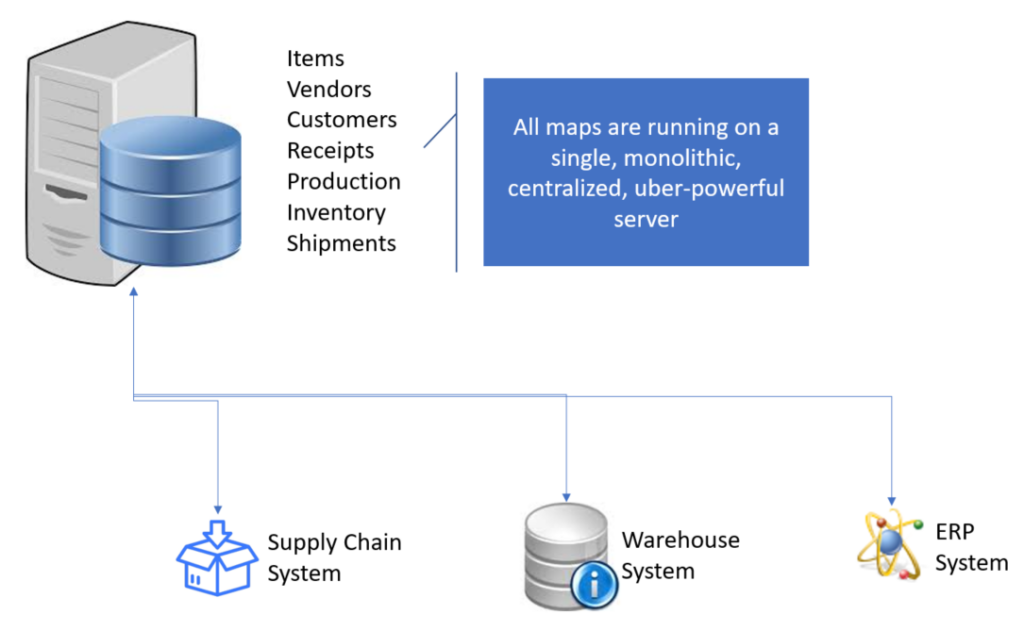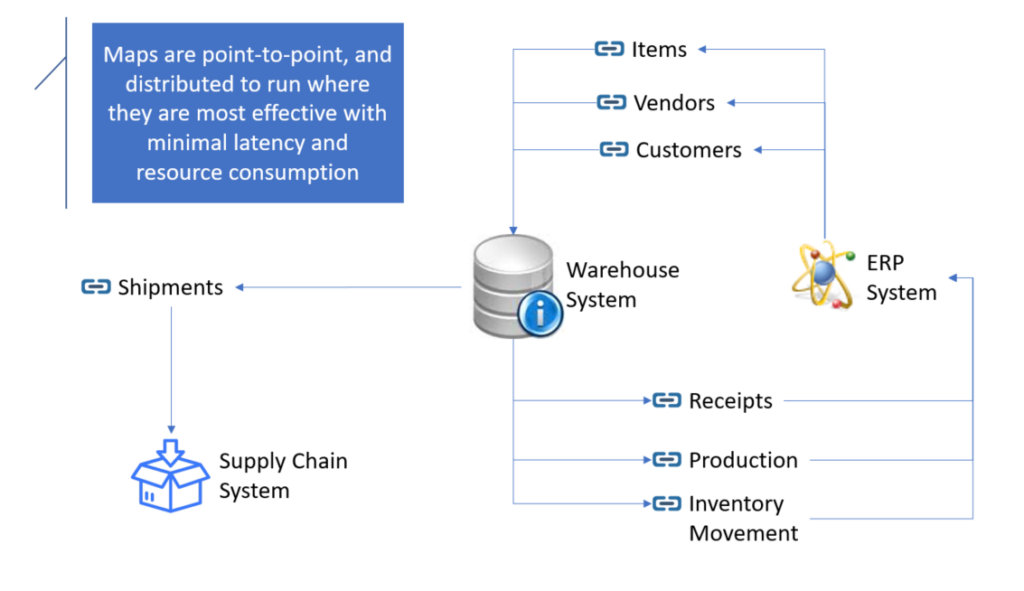OId vs. New Integration Methodology
Using centralized applications for integration is rapidly becoming an outdated methodology due to its inability to stand up to the features, speed, and flexibility of distributed microservices.
It used to be that integrating data between systems could be accomplished by integration applications that ran on a centralized server, requiring that all data, all rules, and all horsepower be dedicated to that centralized server. This centralized (or monolithic) integration methodology is being supplanted with small, nimble, distributed microservices.
The old way: Everything in one single, central, monolithic (and powerful) server. All your eggs in one basket.

Unlike web services, distributed microservices do not need to be called upon to perform work.
They work silently and automatically in the background at all times. They wait for their integration trigger to occur (a new or changed file, database record, website, API call, etc.) and as soon as the trigger occurs they apply the integration map (to transform and map the data) in real-time. These real-time service maps are deployed as discrete maps that are only concerned with mapping a single endpoint collection to another endpoint collection (think file to table, or table to API method or API method to xml, etc.) As new integration maps are needed, they are created using a design tool and then deployed as individual Windows services.The advantages to using microservices for integration over a traditional monolithic integration server are many, including:
- Services are tiny in size and tiny in memory use, requiring few resources. No need for a massive integration server with a ton of memory and expensive processors.
- With no need for centralizing data, services can be deployed anywhere. Deploy them close to the data they are monitoring, or close to data target system, or use two services (one to monitor and one to write) to ensure that everything has as little latency as possible.
- Change control becomes more isolated and more flexible since changes can be made to individual integration maps without affecting other deployed maps.
A Better Way: Distributed Microservices

An enterprise-class microservices integration suite also includes all of the goodies that you expect with any integration solution:
- Centralized management (reporting, monitoring, error tracking, failed transaction retry, scheduling, etc.)
- Support for centralized or distributed development and deployment of service maps.
- Automated transaction logging, process logging, error logging, etc.
- Tight integration with Visual Studio to let you work in your IDE of choice, Visual Studio, as well as support for your existing classes, dlls, APIs, etc. Leverage your existing knowledge and existing code.
In keeping with this new integration methodology, Missing Link Technology developed The LINK® , a powerful and flexible integration suite.
